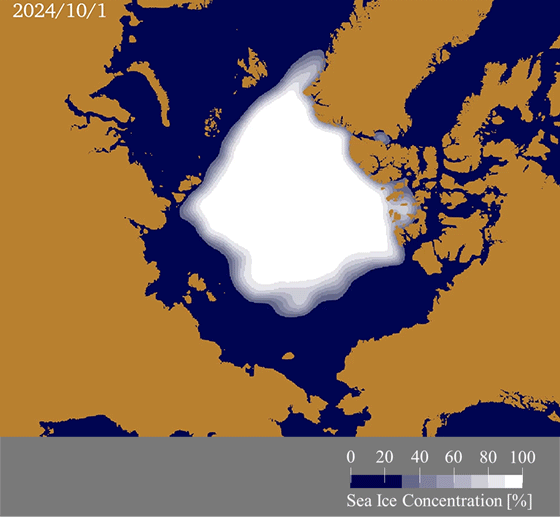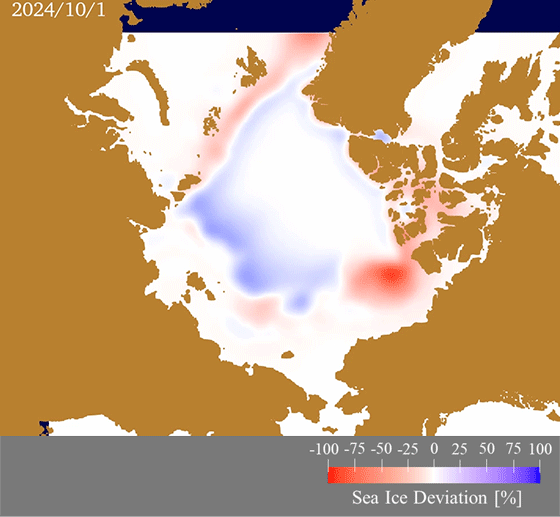2024 Fall report
Arctic Sea Ice Information Center, Noriaki KIMURA (Atmosphere and Ocean Research Institute, The University of Tokyo)

- Sea ice area will expand faster than normal on the Russian side and slower on the Canadian side.
- Sea routes of Canadian side except for Canadian archipelago will close around November 3.


Arctic sea ice area reached its minimum in the middle of September and started expanding. As shown in Figure 3, sea ice around the Beaufort Sea, where sea ice area shrunk more than normal years during the summer, will advance at a slower speed than normal years. Sea ice in the Kara Sea, the Laptev Sea, the East Siberian Sea and the Chukchi Sea will advance at a faster speed than normal years. The ice cover will reach the coast and close the sea routes around November 3 on the Canadian side except for Canadian archipelago. The sea routes on the Russian side did not open this summer because sea ice remained around Wrangel Island.
The prediction was made using the same method as the third report based on the correlation between the sea ice concentration from September 13 to September 22 and the sea ice concentration after October 1. The data for 21 years from 2003 to 2023 are used for the calculation. Please refer to the 2024 Third report complement for details on the method.
This summer, sea ice remained around Wrangel Island, which is a phenomenon that has not occurred between 2003 and 2023. Note that the above method, which makes predictions based on past data, is ineffective for predicting the sea ice that remains around Wrangel Island.
For this prediction, we used the sea ice data from satellite microwave sensors AMSR-E and AMSR2.
You can also check the daily forecast and sea ice age data (daily and yearly) on Arctic Data archive System (ADS) at National Institute of Polar Research.
If you have any questions about satellite monitoring of the Arctic Ocean, sea ice forecasting, or the forecasting methods used here, please contact the Arctic Sea Ice Information Center (
).
The sea ice forecast and its basic research were started in GRENE, continued to ArCS Project, and has been conducted in ArCS II Project since 2020.


